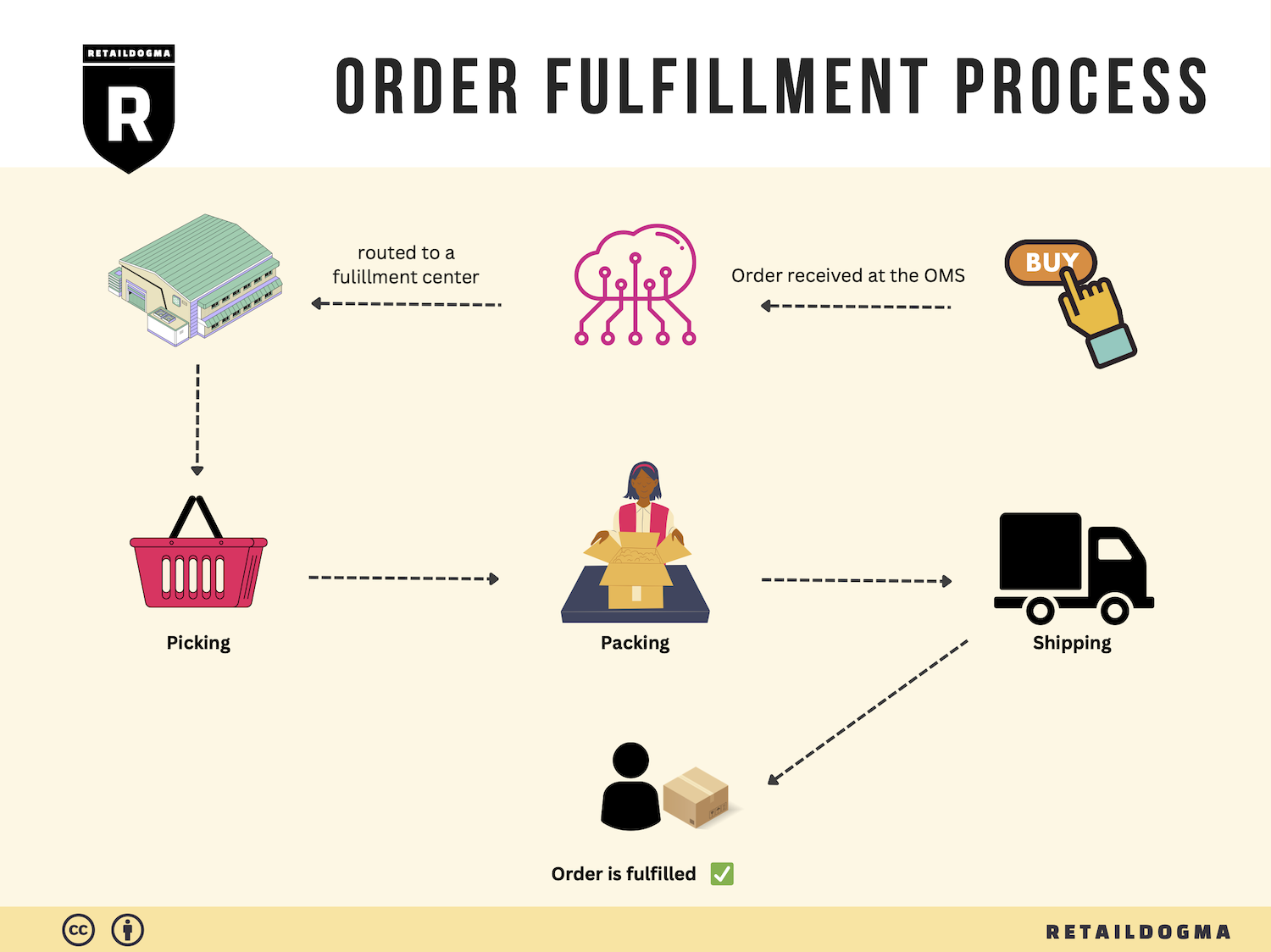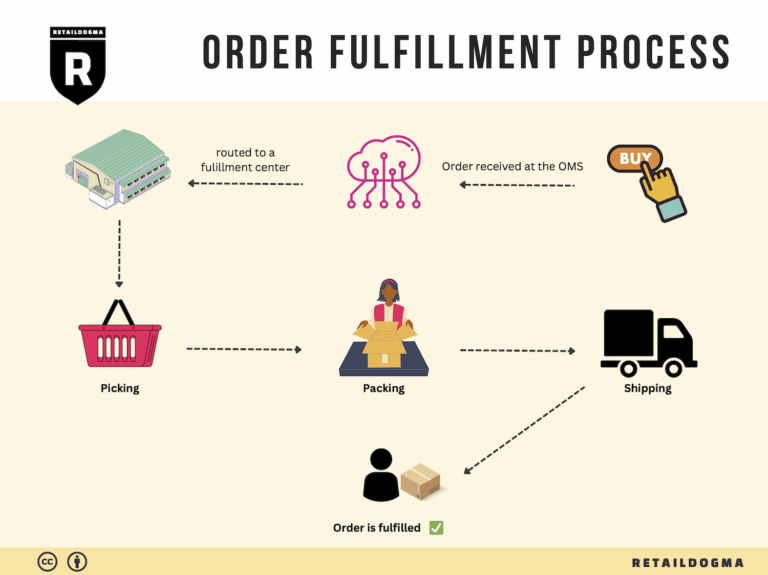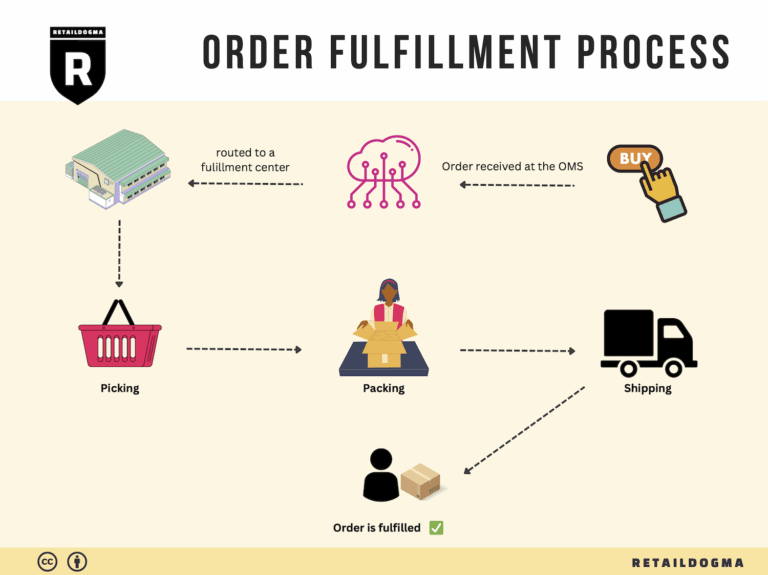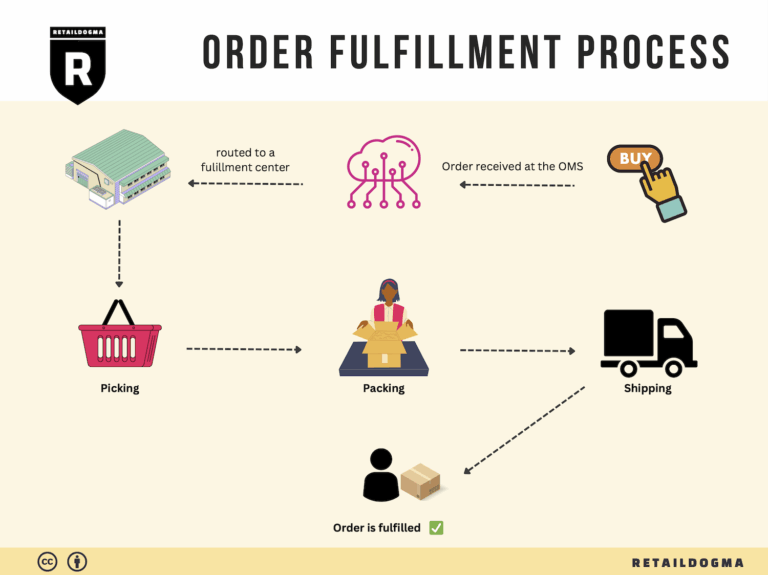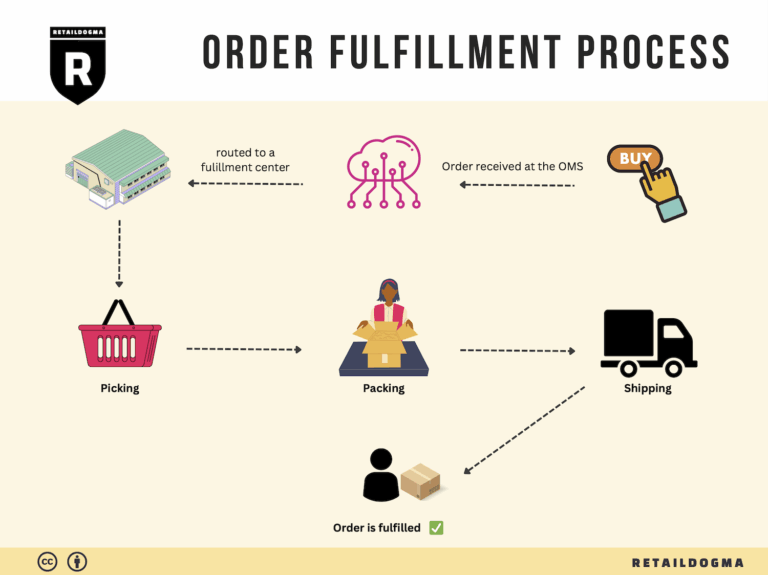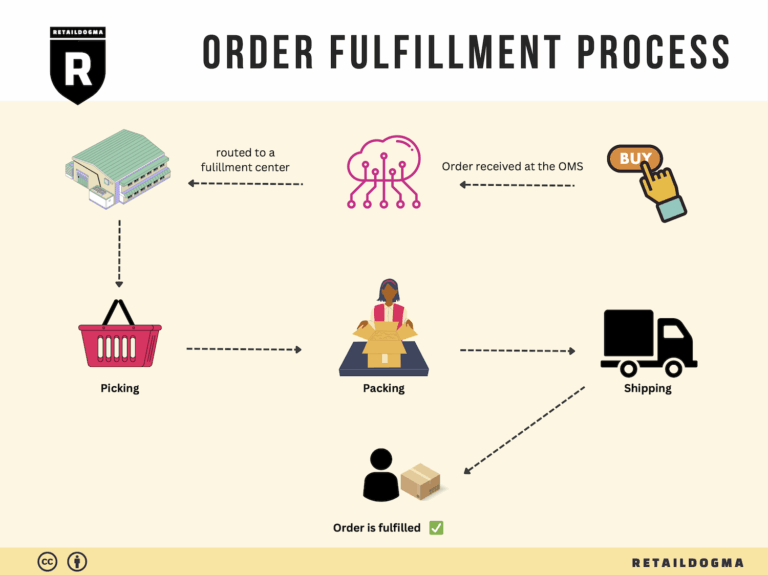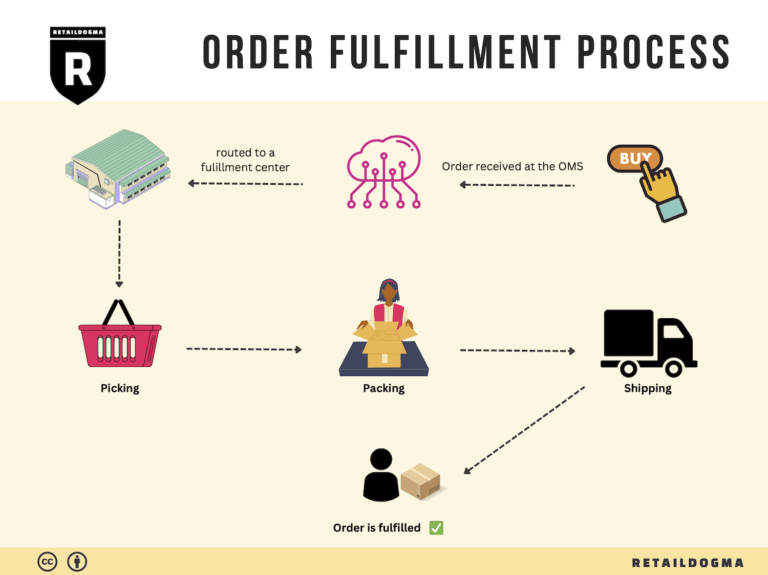How Order Fulfillment Works: A Step-by-Step Guide for Businesses
What is E-commerce Fulfillment? An Introduction for Growing Businesses
Understanding the Challenges of E-commerce Fulfillment
For many growing online businesses, the excitement of sales can quickly turn into a logistical nightmare. The joy of receiving orders can be overshadowed by the overwhelming tasks of packing, shipping, and managing inventory. As your business expands, the intricacies of getting products into the hands of customers can become a significant pain point. This is where effective e-commerce fulfillment comes into play.
E-commerce fulfillment refers to the entire process of receiving, processing, and delivering orders to customers. It encompasses everything from inventory management and order processing to shipping and returns. For businesses in the yoga apparel industry, where customer expectations for speed and quality are high, mastering this process is critical for maintaining satisfaction and loyalty.
What This Guide Will Cover
In this comprehensive guide, we will explore various aspects of e-commerce fulfillment tailored specifically for yoga clothing and activewear brands. We will delve into different fulfillment models, including third-party logistics (3PL) and Fulfillment by Amazon (FBA), to help you understand which option may best suit your business needs. You will learn about the core services involved in effective fulfillment, such as inventory management, order processing, and shipping logistics.
Choosing the right fulfillment partner is a pivotal decision for any growing business. We’ll provide insights on how to evaluate potential partners, including factors like scalability, technology integration, and service reliability. Additionally, we will cover pricing considerations to ensure that you can make cost-effective decisions without compromising on service quality.
Empowering Your Business for Smart Logistics Decisions
The goal of this guide is to empower e-commerce business owners, operations managers, and entrepreneurs to make informed decisions about their logistics strategies. By understanding the nuances of e-commerce fulfillment, you can streamline your operations, enhance customer experiences, and ultimately drive growth in your yoga apparel business. Whether you are just starting out or looking to scale, this guide will equip you with the knowledge needed to navigate the complexities of fulfillment with confidence.
What You’ll Learn In This Guide
- What is E-commerce Fulfillment? An Introduction for Growing Businesses
- The Order Fulfillment Process: From ‘Buy’ Button to Customer’s Door
- Comparing Fulfillment Models: In-House vs. 3PL vs. Dropshipping
- A Deep Dive into Amazon FBA: Pros, Cons, and Who It’s For
- Core Services Offered by Fulfillment Centers
- How to Choose a Fulfillment Partner: A 6-Point Checklist
- Understanding Fulfillment Pricing: A Breakdown of Common Fees
- Frequently Asked Questions (FAQs) about Fulfillment
- Conclusion: Is Outsourcing Fulfillment the Right Move for Your Business?
- Important Disclaimer
The Order Fulfillment Process: From ‘Buy’ Button to Customer’s Door
1. Receiving Inventory
The order fulfillment process begins with receiving inventory. This step involves the acceptance of goods from suppliers or manufacturers into your warehouse. Upon arrival, each item is checked against purchase orders to ensure accuracy in quantity and specifications. This is critical for maintaining inventory integrity and preventing discrepancies that could lead to stockouts or overstock situations.
During this phase, the use of Stock Keeping Units (SKUs) is essential. SKUs are unique identifiers assigned to each product, allowing for efficient tracking and management of inventory. Proper receiving procedures help establish a solid foundation for all subsequent steps in the fulfillment process, ensuring that you have the right products available to meet customer demand.
2. Warehouse Storage
Once inventory is received and verified, the next step is warehouse storage. Products are organized in designated areas within the warehouse based on various factors such as size, weight, and product type. Proper storage practices not only enhance the efficiency of the fulfillment process but also facilitate easy access to products when orders come in.
Effective warehouse management systems (WMS) play a crucial role in this step. A WMS helps track inventory levels, manage storage locations, and optimize space utilization. By implementing a well-structured storage system, businesses can minimize retrieval times and reduce the chances of errors during order picking. This organization is vital for maintaining a swift and effective fulfillment operation.
3. Order Picking
The order picking stage is where the actual items are selected from the warehouse to fulfill customer orders. When a customer places an order, a pick list is generated, detailing the products that need to be collected. Efficient picking strategies, such as batch picking or wave picking, can significantly enhance productivity and reduce the time it takes to gather items.
This step is critical for customer satisfaction; the accuracy of order picking directly impacts the likelihood of returns and customer complaints. Implementing technology, such as barcode scanners or mobile picking devices, can streamline this process, ensuring that items are correctly picked and accounted for. A focus on accuracy during this phase helps maintain brand loyalty and enhances the overall customer experience.
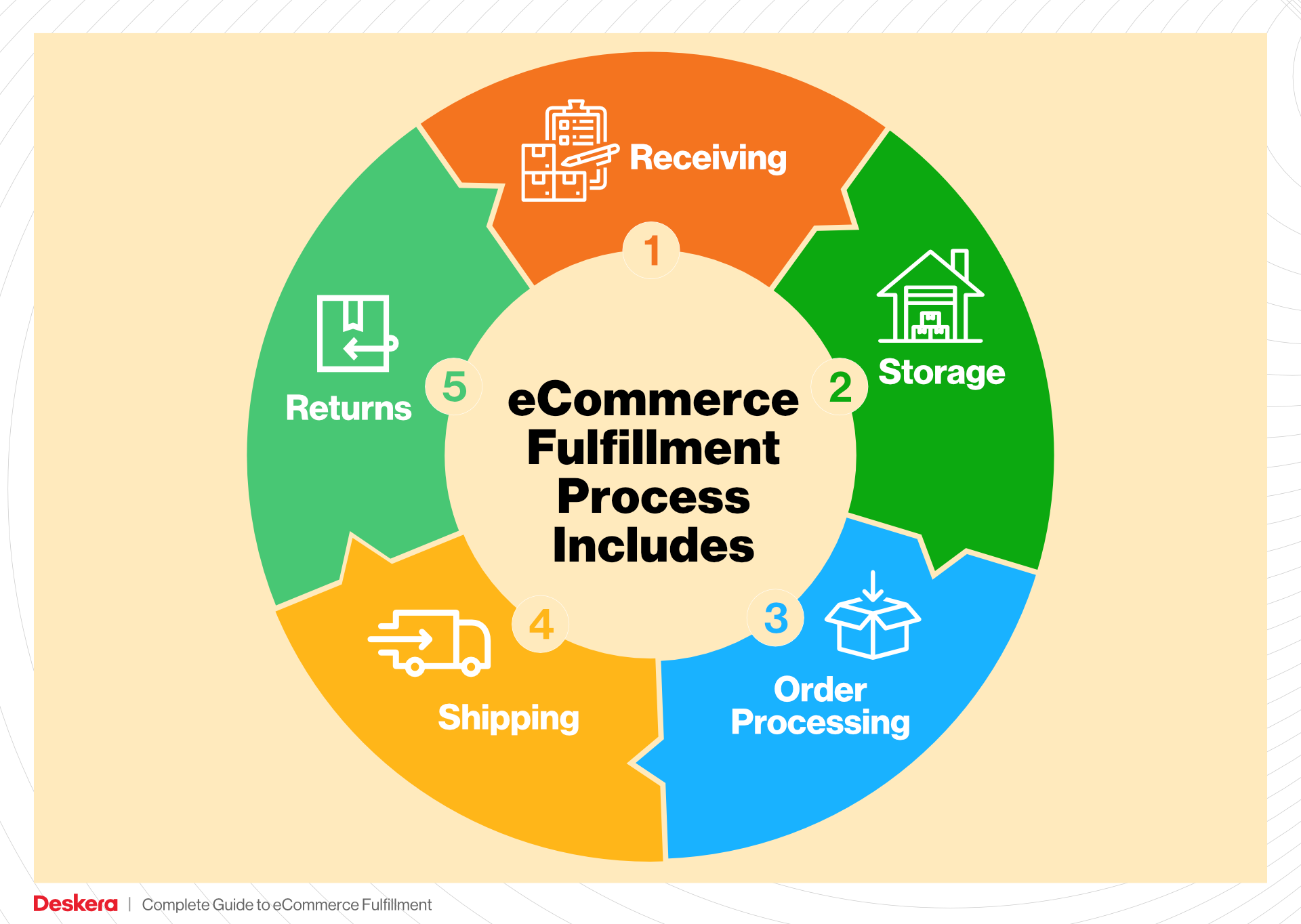
4. Order Packing
After the items are picked, they move to the packing stage. Here, products are carefully packaged to ensure they are protected during transit. The packing process involves selecting appropriate packaging materials, adding protective padding, and labeling packages for shipment. This step is crucial for minimizing damage and ensuring that items arrive at the customer’s door in pristine condition.
Utilizing packing slips is a key practice in this stage. A packing slip contains essential information about the order, including product details, quantities, and shipping addresses. This documentation not only serves as a confirmation for both the warehouse and the customer but also aids in inventory control. Effective packing contributes significantly to the overall efficiency of the fulfillment process and enhances customer satisfaction.
5. Shipping & Delivery
The final step in the order fulfillment process is shipping and delivery. Once orders are packed, they are prepared for shipment, which involves selecting the appropriate carriers and shipping methods based on factors like delivery speed and cost. Shipping software can assist in generating labels, tracking shipments, and managing logistics to ensure timely delivery.
This phase is vital for maintaining customer satisfaction, as timely delivery is often a key factor in consumer purchasing decisions. Implementing real-time tracking systems allows customers to monitor their orders, reducing anxiety and enhancing the overall shopping experience. By optimizing shipping strategies, businesses can improve their delivery performance, foster customer loyalty, and position themselves competitively in the market.
In summary, each step of the order fulfillment process—receiving inventory, warehouse storage, order picking, order packing, and shipping & delivery—plays a pivotal role in the overall efficiency and effectiveness of your e-commerce operations. By understanding and optimizing each phase, businesses can enhance customer satisfaction, reduce operational costs, and ultimately scale their growth in the competitive yoga e-commerce landscape.
Comparing Fulfillment Models: In-House vs. 3PL vs. Dropshipping
Comparison of Fulfillment Models
| Model | Who Handles Inventory | Best For (Business Stage) | Key Advantage | Key Disadvantage |
|---|---|---|---|---|
| In-House Fulfillment | Business itself | Startups and small brands | Full control over inventory and operations | High upfront costs and resource-intensive |
| Third-Party Logistics (3PL) | 3PL provider | Growing and established brands | Scalable, expert logistics support | Less control over operations and potential costs |
| Dropshipping | Supplier | New entrepreneurs and niche brands | Minimal upfront investment and risk | Lower profit margins and limited control over inventory |
In-House Fulfillment
In-house fulfillment involves managing the entire logistics process internally. This model grants business owners complete control over their inventory, warehousing, and shipping operations. For startups and small brands with limited product lines, in-house fulfillment can be advantageous due to the direct oversight it allows. Businesses can ensure that products are handled according to their standards, and they can quickly adapt processes based on customer feedback. However, this model comes with significant drawbacks, including substantial upfront costs related to warehousing, staffing, and technology investments. As order volumes increase, businesses may find in-house fulfillment to be resource-intensive and difficult to scale efficiently. For yoga e-commerce businesses, maintaining a nimble operation while managing inventory, especially with seasonal demand fluctuations, can be particularly challenging in an in-house setup.
Third-Party Logistics (3PL)
Third-party logistics (3PL) providers offer a robust solution for businesses looking to outsource their fulfillment processes. By partnering with a 3PL, brands can leverage specialized logistics expertise, advanced technology, and scalable warehousing solutions without the need for heavy upfront investments. This is particularly beneficial for growing and established yoga apparel brands that experience seasonal spikes in demand or need to adapt quickly to market trends. 3PL providers manage inventory, order processing, shipping, and returns, allowing brands to focus on core functions such as product design and marketing. Additionally, many 3PLs have integrated systems that work seamlessly with e-commerce platforms, ensuring efficient order tracking and inventory management. However, the trade-off is a potential loss of control over certain aspects of the fulfillment process. Brands must ensure they choose a reputable 3PL that aligns with their quality standards and customer service expectations to mitigate any risks associated with this model.
Dropshipping
Dropshipping is a fulfillment model that allows businesses to sell products without holding any inventory themselves. Instead, when a customer makes a purchase, the order is forwarded to a supplier who then ships the product directly to the customer. This model is particularly appealing for new entrepreneurs and niche brands in the yoga e-commerce space due to its minimal upfront investment and low financial risk. It enables business owners to offer a wide variety of products without the burden of inventory management. However, dropshipping comes with its challenges, including lower profit margins, as suppliers often charge higher prices for individual items. Additionally, businesses have limited control over inventory quality and shipping times, which can impact customer satisfaction. For yoga brands, ensuring that the products meet eco-friendly and quality standards can be difficult when relying on external suppliers. As a result, while dropshipping can provide an accessible entry point into the market, it may not be sustainable for brands looking to build a loyal customer base and a strong brand reputation.
In summary, choosing the right fulfillment model requires careful consideration of your business stage, operational capabilities, and growth ambitions. Each model presents unique advantages and challenges, and understanding these can help you make an informed decision that aligns with your business goals in the competitive yoga e-commerce landscape.
A Deep Dive into Amazon FBA: Pros, Cons, and Who It’s For
Understanding Fulfillment by Amazon (FBA)
Fulfillment by Amazon (FBA) is a service offered by Amazon that allows businesses to store their products in Amazon’s fulfillment centers. Amazon then takes care of storage, packaging, shipping, and customer service for these products. This service enables sellers to leverage Amazon’s vast logistics network and customer base, providing a streamlined approach to e-commerce fulfillment.
How FBA Works
-
Product Listing: Sellers create product listings on Amazon. They can choose to fulfill their orders through FBA by selecting it as the fulfillment method.
-
Shipping Inventory to Amazon: Sellers send their products to Amazon’s designated fulfillment centers. Amazon provides guidelines on how to prepare and package these products to ensure they meet their requirements.
-
Storage: Once the inventory arrives at Amazon’s warehouses, it is stored until sold. Amazon keeps track of stock levels and manages inventory across multiple locations.
-
Order Processing: When a customer places an order, Amazon picks, packs, and ships the product directly to the customer. They also handle customer inquiries and returns.
-
Customer Support: Amazon provides 24/7 customer service for FBA orders, including handling returns and refunds, which can significantly enhance customer satisfaction.
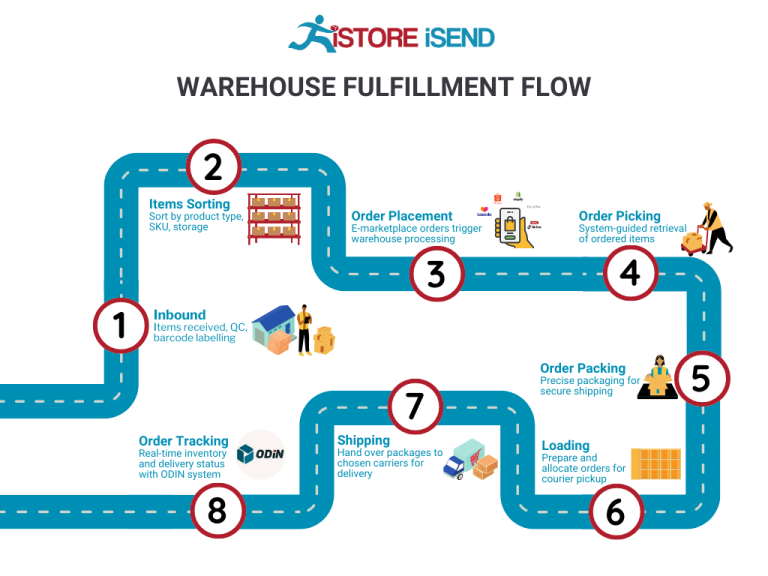
-
Payment: After an order is fulfilled, Amazon deducts its fees from the sale price and transfers the remaining amount to the seller.
Pros of Using Amazon FBA
-
Prime Eligibility: Products fulfilled by Amazon are eligible for Amazon Prime, which can significantly increase visibility and sales. Prime members often prefer products that offer free two-day shipping, leading to higher conversion rates.
-
Customer Trust: Selling through Amazon enhances credibility and trust among customers. Amazon’s established brand and reputation can help new sellers gain customer confidence more quickly than they might on their own.
-
Multi-Channel Fulfillment: FBA can fulfill orders from various sales channels, not just Amazon. Sellers can integrate FBA with their own websites or other e-commerce platforms, streamlining their fulfillment process across different sales channels.
-
Scalability: FBA allows businesses to scale quickly without worrying about logistics. As demand increases, sellers can send more inventory to Amazon without having to invest in additional warehouse space or staff.
-
Inventory Management: Amazon’s sophisticated systems for inventory tracking can help sellers manage stock levels more effectively, reducing the risk of stockouts or overstock situations.
-
Marketing and Promotions: FBA products can benefit from Amazon’s marketing tools, including promotions, deals, and advertising options that can increase visibility and sales.
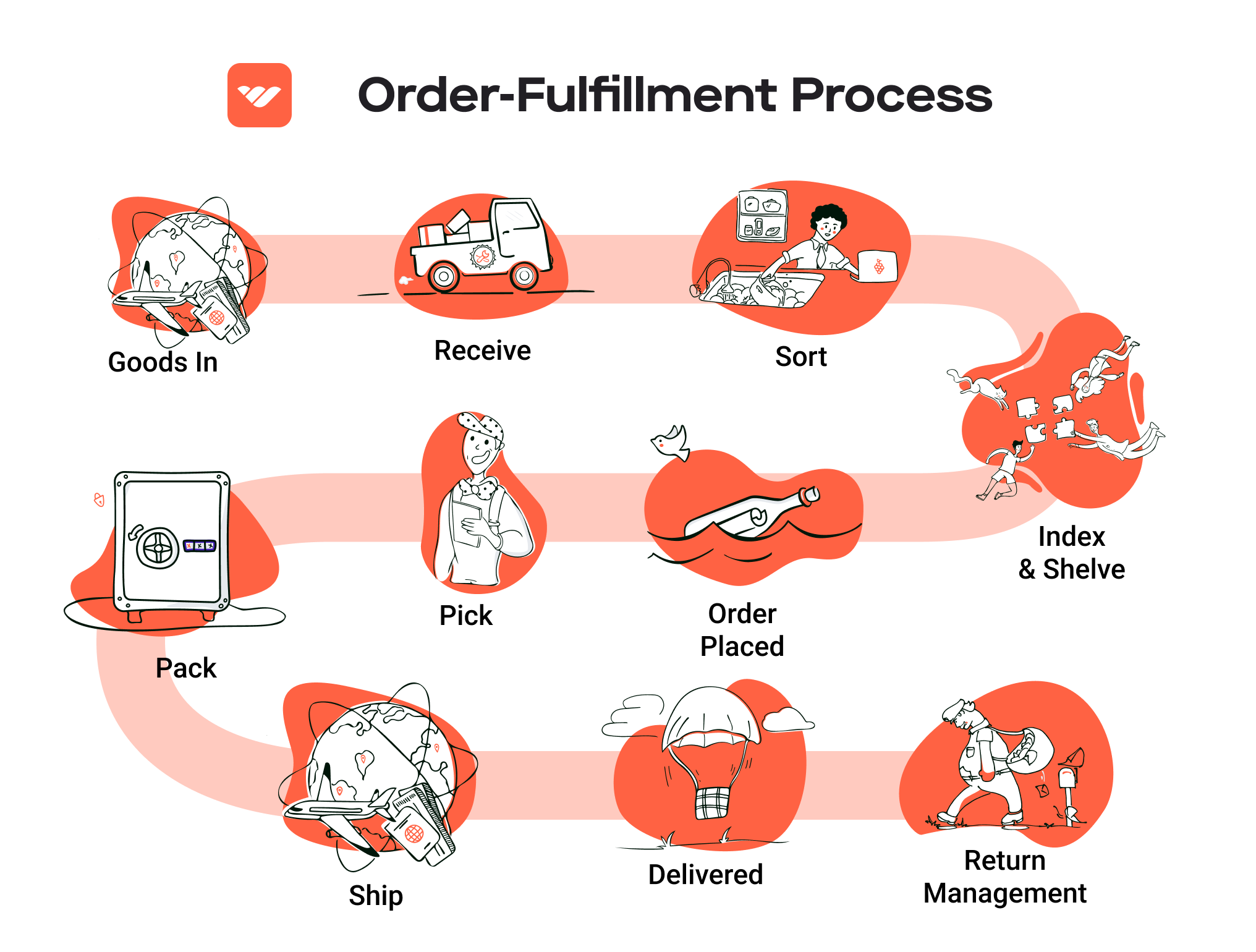
Cons of Using Amazon FBA
-
High Fees: FBA comes with various fees, including storage fees, fulfillment fees, and additional charges for long-term storage. These costs can add up quickly and eat into profit margins, especially for lower-priced items.
-
Strict Inventory Rules: Amazon has stringent inventory management policies, including requirements for labeling, packaging, and product condition. Sellers must adhere to these guidelines to avoid penalties or removal of their products from the platform.
-
Commingling Risks: FBA products are often commingled with other sellers’ inventory. This means that a seller’s products may be shipped to customers alongside products from other sellers, which can lead to issues with quality control and brand reputation.
-
Limited Control: While FBA simplifies logistics, it also means sellers have less control over the fulfillment process. Any issues that arise during shipping or handling are managed by Amazon, which may not always align with the seller’s standards.
-
Inventory Limits: Amazon imposes limits on the amount of inventory sellers can send to their fulfillment centers, particularly for new sellers. This can restrict growth opportunities and may require careful planning to manage stock levels effectively.
-
Dependency on Amazon: Relying heavily on FBA can create a dependency on Amazon’s platform, making it challenging for sellers to diversify their sales channels and build their own brand identity outside of Amazon.
Who is FBA Best For?
Fulfillment by Amazon is particularly suited for:
-
Small to Medium-Sized Businesses: Companies looking to scale quickly without investing in logistics infrastructure can benefit from FBA’s capabilities.
-
E-commerce Entrepreneurs: New sellers who may lack experience in fulfillment and logistics can leverage Amazon’s expertise to streamline their operations.
-
Brands with High Demand Products: Businesses that sell popular or seasonal items can take advantage of FBA’s fast shipping and Prime eligibility to maximize sales during peak times.
-
Sellers with Limited Resources: Companies that do not have the capital to invest in warehousing, staffing, or technology for in-house fulfillment can use FBA to reduce overhead costs.
-
Multi-Channel Sellers: Businesses that sell on multiple platforms can benefit from FBA’s multi-channel fulfillment capabilities, allowing them to centralize logistics operations.
In conclusion, Fulfillment by Amazon offers a powerful solution for e-commerce businesses looking to streamline their operations and enhance their market presence. However, it is essential for sellers to weigh the pros and cons carefully, considering their specific business needs and growth strategies before committing to FBA.
Core Services Offered by Fulfillment Centers
Inventory Management & Warehousing
Effective inventory management and warehousing are foundational services provided by fulfillment centers that significantly impact e-commerce operations, particularly for businesses in niche markets like yoga apparel. This service involves not only the physical storage of products but also the systematic tracking and management of inventory levels.
What It Is: Fulfillment centers use advanced warehouse management systems (WMS) to monitor stock levels in real-time, ensuring that businesses can efficiently manage their inventory. These systems provide insights into sales trends, seasonal demand, and product performance, allowing for data-driven decision-making.
Benefits:
– Optimized Stock Levels: By maintaining accurate inventory counts, fulfillment centers help businesses avoid stockouts and overstock situations, which can lead to lost sales or increased holding costs.
– Enhanced Customer Satisfaction: With efficient inventory management, businesses can fulfill orders promptly, meeting customer expectations for quick delivery—a critical factor in retaining customers.
– Scalability: As e-commerce businesses grow, their inventory needs can fluctuate. Fulfillment centers provide the flexibility to scale operations up or down, accommodating seasonal peaks and changes in demand without the need for significant capital investment in warehousing infrastructure.
Pick and Pack Services
Pick and pack services are integral to the order fulfillment process. This service entails selecting items from the warehouse (picking) and then packing them securely for shipment (packing).
What It Is: Fulfillment centers employ streamlined processes to quickly retrieve ordered items from inventory and package them according to the specific requirements of each order. This may include using branded packaging materials, including packing slips, or using protective packaging to ensure the items arrive undamaged.
Benefits:
– Efficiency: Fulfillment centers leverage technology and optimized workflows to reduce the time it takes to pick and pack orders, which is vital in a competitive e-commerce landscape where speed is crucial.
– Accuracy: With trained staff and automated systems, fulfillment centers minimize errors in order fulfillment, ensuring that customers receive the correct products. This accuracy reduces return rates and enhances brand reputation.
– Cost-Effectiveness: By outsourcing pick and pack services, businesses can lower operational costs associated with staffing and training, allowing them to focus resources on growth and marketing initiatives.
Kitting and Assembly
Kitting and assembly services involve creating bundled products or preparing items for sale by combining multiple components into a single package.
What It Is: This service is particularly beneficial for businesses that sell yoga bundles—such as mats, blocks, and straps—or for those offering promotional packages. Fulfillment centers can assemble these kits in-house, ensuring that everything is included and ready for shipment.
Benefits:
– Streamlined Offerings: By providing pre-assembled kits, businesses can simplify the purchasing process for customers, making it easier to buy multiple related products in one transaction.
– Increased Sales Opportunities: Kitting can encourage higher average order values as customers are more likely to purchase bundled products. This strategy can also facilitate upselling and cross-selling opportunities.
– Time Savings: Outsourcing kitting and assembly allows businesses to save time and resources, enabling them to focus on core operations, such as product development and marketing.
Returns Management (Reverse Logistics)
Returns management, often referred to as reverse logistics, is a critical aspect of e-commerce fulfillment that involves handling product returns efficiently and effectively.
What It Is: This service encompasses the entire process of returning products from the customer back to the warehouse, including inspection, restocking, and processing refunds or exchanges. Fulfillment centers typically have systems in place to manage returns seamlessly, ensuring a smooth experience for both the business and the customer.
Benefits:
– Improved Customer Experience: A well-managed returns process can enhance customer satisfaction by making it easy for them to return unwanted or defective products, thereby increasing customer loyalty.
– Data Insights: Analyzing return data helps businesses identify trends and issues related to product quality, sizing, or customer preferences, allowing them to make informed decisions to improve their offerings.
– Cost Management: By efficiently handling returns, fulfillment centers can minimize losses associated with returned goods and ensure that products are quickly restocked and made available for resale.
In conclusion, partnering with a fulfillment center that offers these core services allows e-commerce businesses, especially those in the yoga apparel market, to streamline operations, enhance customer satisfaction, and focus on growth. By leveraging expert logistics solutions, businesses can effectively navigate the complexities of order fulfillment and scale their operations efficiently.
How to Choose a Fulfillment Partner: A 6-Point Checklist
Location & Warehouse Network
The geographic location of your fulfillment partner is crucial for minimizing shipping times and costs. A well-positioned warehouse network ensures faster delivery to your customers, which can significantly enhance customer satisfaction and retention.
Questions to Ask:
– Where are your warehouses located, and how do they align with my target market?
– What shipping carriers do you partner with, and what are your average delivery times?
– How do you handle shipping to international locations, if applicable?
Technology & Integrations
In today’s digital landscape, the technology used by your fulfillment partner can greatly impact your operational efficiency. A fulfillment partner with advanced technology can provide real-time inventory tracking, order management, and seamless integration with your e-commerce platform.
Questions to Ask:
– What warehouse management system (WMS) do you use, and how does it integrate with my e-commerce platform?
– Can you provide real-time inventory updates, and how do you manage order tracking?
– What kind of data analytics and reporting capabilities do you offer to help me optimize my operations?
Specializations (e.g., cold storage, oversized items)
Different products come with varying fulfillment needs. If your yoga e-commerce business includes specialized items like cold storage products (e.g., eco-friendly yoga mats made from perishable materials) or oversized items (e.g., yoga equipment), your fulfillment partner should have the necessary capabilities.
Questions to Ask:
– Do you have the facilities and equipment to handle my specific product types?
– What measures do you take to ensure the safe handling and storage of specialized items?
– Can you accommodate fluctuating inventory levels for seasonal products?
Scalability & Capacity
As your yoga e-commerce business grows, your fulfillment needs will change. It’s essential to partner with a fulfillment provider that can scale with your business and handle fluctuating volumes, especially during peak seasons.
Questions to Ask:
– How do you manage seasonal fluctuations in demand, and what strategies do you have in place for peak times?
– Can you provide examples of how you’ve scaled operations for other clients?
– What is your capacity for expanding warehouse space or resources if my business grows?
Pricing and Contracts
Understanding the pricing structure and contract terms of your fulfillment partner is vital to ensure your business remains profitable. Look for transparency in pricing and flexibility in contracts, as hidden fees can erode your margins.
Questions to Ask:
– Can you provide a detailed breakdown of your pricing structure, including any hidden fees?
– What are the terms of the contract, and is there flexibility for early termination or changes?
– Do you offer any incentives for long-term contracts, such as discounts or additional services?
Customer Support & Reviews
Reliable customer support is essential for resolving issues quickly and ensuring smooth operations. Additionally, reviewing feedback from other businesses can provide valuable insights into the partner’s reliability and service quality.
Questions to Ask:
– What customer support options do you provide, and what are your hours of operation?
– How do you handle order errors or fulfillment issues, and what is your process for resolving them?
– Can you share testimonials or case studies from other clients in the yoga or activewear industry?
Conclusion
Choosing the right fulfillment partner is a strategic decision that can significantly impact your yoga e-commerce business. By carefully evaluating potential partners against these six critical criteria—location, technology, specialization, scalability, pricing, and customer support—you can make an informed decision that aligns with your business goals and enhances your operational efficiency. Taking the time to ask the right questions and assess each partner’s capabilities will ultimately help you build a robust and scalable logistics framework, ensuring that you meet customer demands while maximizing profitability.
Understanding Fulfillment Pricing: A Breakdown of Common Fees
Initial Setup Fees
When partnering with a third-party logistics (3PL) provider, the first expense you may encounter is the initial setup fee. This fee typically covers the costs associated with integrating your e-commerce platform with the 3PL’s systems, configuring inventory management, and establishing the necessary logistics protocols. The setup process may include:
- Software Integration: Connecting your e-commerce platform (like Shopify, WooCommerce, or others) to the 3PL’s fulfillment system.
- Warehouse Configuration: Arranging the warehouse to accommodate your specific products, which may require specialized storage solutions for yoga apparel.
- Training and Onboarding: Ensuring your team understands how to use the 3PL’s systems effectively.
Setup fees can vary significantly based on the complexity of your requirements and the provider’s capabilities. Generally, expect to pay a one-time fee that can range from a few hundred to several thousand dollars.
Receiving Fees
Receiving fees are charged when your products arrive at the 3PL’s warehouse. This fee covers the labor and processes involved in unloading and inspecting incoming shipments, as well as updating inventory records. The calculation of receiving fees usually depends on:
- Volume of Goods: The number of pallets or containers being received.
- Complexity of Inspection: If your products require special handling or quality checks, additional fees may apply.
- Time Spent: Some providers charge based on the time taken to process the incoming goods.
Typically, receiving fees can range from a flat fee per pallet to a variable rate based on the total weight or volume of the shipment.
Storage Fees (per pallet/bin)
Storage fees are charged for keeping your products in the 3PL’s warehouse. These fees are often calculated on a per-pallet or per-bin basis and can vary based on:
- Location of the Warehouse: Warehousing costs can differ depending on geographic location and real estate prices.
- Duration of Storage: Many providers charge monthly, and you may incur additional fees if your inventory exceeds a specified time limit.
- Type of Storage: Different storage solutions (e.g., ambient, climate-controlled) may come with varying costs.
Understanding your inventory turnover rate is crucial here. If you have seasonal products, consider negotiating lower rates for short-term storage or look for flexible storage options to minimize costs.
Pick & Pack Fees (per item/order)
Pick and pack fees are incurred each time an order is processed. This fee covers the labor involved in locating the items in the warehouse, packing them for shipment, and preparing them for delivery. These fees can be broken down into:
- Pick Fees: Charged per item picked from the shelves. This can vary based on the complexity of the pick, such as whether items are located in different areas of the warehouse.
- Pack Fees: Charged for the time taken to pack the order, which may include the cost of packing materials (boxes, bubble wrap, etc.).
Pick and pack fees can be structured as a flat rate per order or vary based on the number of items in the order. Understanding your average order size can help you estimate these costs.
Shipping Fees
Shipping fees are one of the most variable costs in fulfillment and can significantly impact your overall logistics expenses. These fees are calculated based on:
- Shipping Method: Costs can vary widely depending on whether you choose standard ground shipping, expedited options, or international shipping.
- Weight and Dimensions: Carriers often charge based on the weight and size of the package, so it’s essential to optimize packaging to avoid dimensional weight pricing.
- Destination: Shipping costs will vary based on where the package is being sent, with international shipments typically incurring higher fees.
Many 3PLs offer discounted shipping rates due to their volume, which can be a significant advantage for e-commerce businesses.
Tips for Getting an Accurate Quote
When seeking an accurate quote for fulfillment services, consider the following tips:
- Be Transparent About Your Needs: Clearly outline your inventory size, order volume, and specific requirements to receive a tailored quote.
- Ask for Detailed Breakdown: Ensure the quote includes a detailed breakdown of all fees, so you understand how costs are calculated.
- Consider Seasonal Fluctuations: Discuss how your needs may change throughout the year and how that affects pricing.
- Request a Trial Period: Some providers may offer a trial period at reduced rates, allowing you to evaluate their services without a long-term commitment.
- Negotiate Terms: Don’t hesitate to negotiate terms, especially if you expect to scale your business significantly.
By thoroughly understanding these common fees and how they are calculated, you can make informed decisions about your fulfillment strategy, ensuring that it aligns with your business goals while keeping costs manageable.
Frequently Asked Questions (FAQs) about Fulfillment
1. What is e-commerce fulfillment in the context of yoga clothing?
E-commerce fulfillment refers to the complete process of receiving, processing, and delivering orders to customers. For yoga clothing businesses, it encompasses inventory management, order picking and packing, shipping, and handling returns. Efficient fulfillment is crucial for maintaining customer satisfaction and brand loyalty, especially in a competitive market.
2. What is a 3PL and how does it benefit my yoga e-commerce business?
A Third-Party Logistics (3PL) provider manages various logistics functions on behalf of a business. For yoga e-commerce, partnering with a 3PL can streamline operations by handling warehousing, inventory management, order fulfillment, and shipping. This allows business owners to focus on core activities like product design and marketing, while leveraging the 3PL’s expertise to optimize logistics efficiency and scalability.
3. How much do fulfillment services cost?
Fulfillment service costs can vary widely based on factors such as order volume, storage space, and specific services required (like packaging and shipping). Typically, businesses can expect to pay for warehousing space, per-order fulfillment fees, and shipping costs. It’s essential to get quotes from multiple providers to find a service that aligns with your budget and operational needs.
4. What’s the difference between a warehouse and a fulfillment center?
A warehouse primarily serves as a storage facility for goods, focusing on inventory management. In contrast, a fulfillment center is equipped to handle the entire order processing flow, including receiving, storing, picking, packing, and shipping products to customers. For yoga clothing businesses, a fulfillment center can provide a more comprehensive solution that enhances delivery speed and customer satisfaction.
5. How can I ensure timely order fulfillment for my yoga clothing line?
To ensure timely order fulfillment, consider implementing an efficient inventory management system, collaborating with a reliable 3PL provider, and utilizing real-time tracking technologies. Additionally, maintaining optimal stock levels and anticipating seasonal demand can help prevent delays and ensure that orders are processed swiftly.
6. What are the common challenges in yoga clothing fulfillment?
Common challenges include managing inventory accuracy, handling seasonal demand fluctuations, maintaining product quality, and ensuring timely delivery. Additionally, addressing specific requirements like material authenticity and sizing variations can complicate the fulfillment process. Partnering with an experienced 3PL can help mitigate these challenges.
7. How does effective inventory management impact my yoga e-commerce business?
Effective inventory management helps prevent stockouts and overstock situations, which can lead to lost sales or increased holding costs. By utilizing advanced forecasting tools and a sophisticated warehouse management system, yoga clothing businesses can maintain optimal stock levels, improve cash flow, and enhance customer satisfaction through timely order fulfillment.
8. What role does packaging play in yoga clothing fulfillment?
Proper packaging is vital in protecting yoga clothing during transit. It ensures that products arrive in excellent condition, which is essential for maintaining customer satisfaction and brand reputation. Utilizing appropriate materials and techniques for packaging can also enhance the unboxing experience, further reinforcing brand loyalty.
9. How can I manage seasonal demand fluctuations in my yoga clothing business?
To manage seasonal demand fluctuations, implement accurate demand forecasting techniques and collaborate with a flexible 3PL provider. This allows you to scale operations up or down based on market trends. Additionally, consider promotional strategies or limited-time offers during peak seasons to drive sales while ensuring your inventory aligns with customer demand.
10. What are the benefits of outsourcing fulfillment to a 3PL for my yoga clothing brand?
Outsourcing fulfillment to a 3PL offers several benefits, including reduced operational costs, access to advanced logistics technology, and the ability to scale quickly in response to market changes. It allows business owners to focus on growth and innovation while relying on the 3PL’s expertise to handle complex logistics challenges efficiently.
Conclusion: Is Outsourcing Fulfillment the Right Move for Your Business?
Evaluating the Benefits of Outsourcing Fulfillment
Outsourcing your fulfillment process can be a transformative decision for your yoga eCommerce business. One of the primary benefits is the substantial time savings it offers. By partnering with a third-party logistics (3PL) provider, you free up valuable resources and personnel to focus on core areas such as product innovation, marketing, and customer engagement, rather than getting bogged down in logistical complexities.
Scalability is another critical advantage. As your business grows, so do the demands on your fulfillment operations. A reliable 3PL can adapt to your fluctuating needs, whether during peak seasons or rapid growth phases. This flexibility ensures that you can meet customer expectations without the burden of scaling operations in-house, which often involves significant capital investment in infrastructure and technology.
Moreover, leveraging the expertise of a fulfillment partner can significantly enhance your operational efficiency. Established 3PLs, like Speed Commerce, possess industry-specific knowledge and advanced systems that streamline inventory management, order processing, and shipping. Their experience allows them to navigate common challenges in the yoga clothing sector, such as inventory forecasting and trend responsiveness, enabling you to maintain a competitive edge.
Choosing the Right Partner for Growth
However, the benefits of outsourcing fulfillment hinge on selecting the right partner. Your fulfillment provider should align with your brand values, understand your product requirements, and offer the flexibility to grow with you. A strategic partnership can drive customer satisfaction and ultimately contribute to your bottom line.
Call to Action
If you’re contemplating whether outsourcing fulfillment is the right move for your business, start by auditing your current shipping process. Identify bottlenecks, inefficiencies, and areas where a 3PL could provide value. This evaluation is a crucial step toward making an informed decision that could propel your yoga eCommerce business to new heights. Don’t hesitate—take action today and explore how a fulfillment partner can enhance your operational strategy.
Important Disclaimer
⚠️ Important Disclaimer
The information in this guide is for educational purposes. Fulfillment services, pricing, and platform features change frequently. Always conduct your own due diligence and consult with providers directly before making business decisions.
